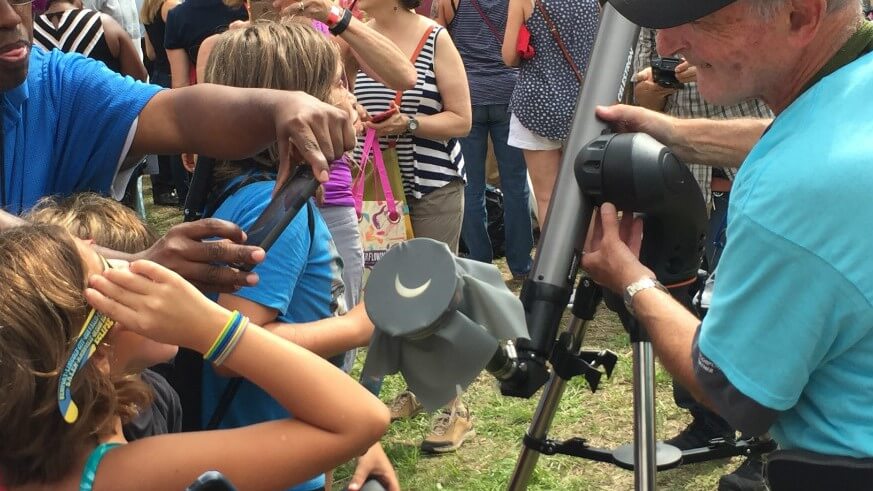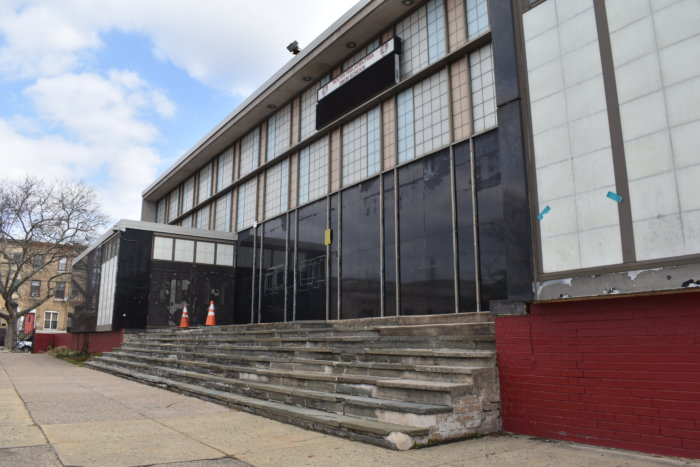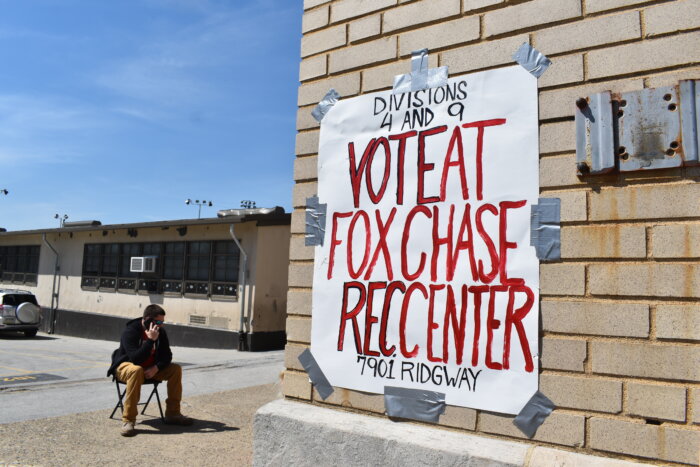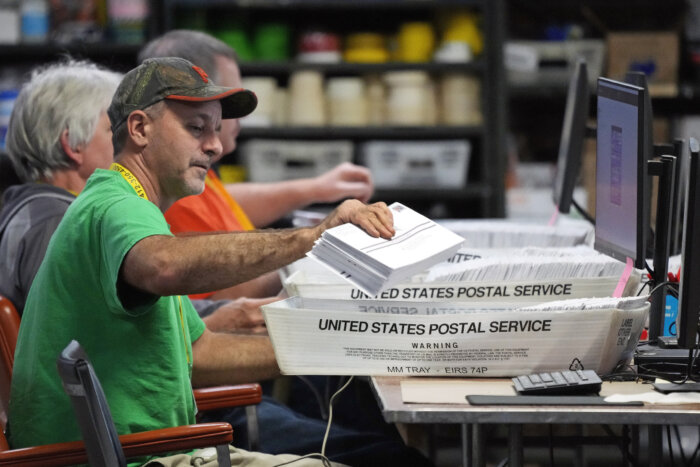The day’s soft gray cloud-cover did little to dampen the mood of hundreds of solar eclipse viewers who gathered outside of the Franklin Institute, on the Ben Franklin Parkway, on Monday, while they all waited for the once-in-a-lifetime chance to see a solar eclipse.
“This is just incredible,” said Michael Fallon, 49, of Massachusetts, as he viewed the event through special glasses that were intended to protect his eyes.
Fallon was in the area on a trip with his family and, he joked that he dragged his children Cameron, 15 and Lauren, 13, out of bed and over to the Franklin Institute in the hopes of helping them experience the event.
They seemed to appreciate it though.
“It’s fun. It’s going to be a once-in-a-lifetime kind of thing,” said Cameron.
A total solar eclipse over North America, like Monday’s, is a pretty unique event. The last one happened on July 11 of 1991 and, even then, it’s path of totality – or the areas where the sun would be totally blocked by the moon – only passed over one state: Hawaii.
The last total solar eclipse to pass over the contiguous states happened on February, 26 of 1979, when it could be seen from states in the Pacific Northwest.
During the day, Franklin Institute staff and volunteers performed science exhibitions in the yard outside of the Franklin Institute, while there were also several areas set up to help the public view the solar event. Just seconds of looking at the sun can damage the eyes, due to the massive amounts of UV light released by the sun.
To protect viewers, The Franklin Institute provided many with individual glasses made of cardboard that they could wear while looking at the sun. But, institute volunteer, Dave Fitzpatrick said that there were so many people at the day’s events that the Franklin Institute quickly ran out of glasses for everyone.
“People have been so despite to get the glasses,” he said. “As fast as they come in, they are gone… We knew today would be exciting, but this is just way beyond what we expected.”
In order to allow everyone a chance to see the solar eclipse, the Franklin Institute also had sunspotters – a sort of wooden solar telescope – set up to allow viewers to see the sun’s image reflected against a white background, telescopes manned by volunteers that allowed a view of the eclipse and tents covered in a see-through protective covering that allowed all those in these tents to see the eclipse.
And, vision safety during an eclipse is important, noted photographer Ned Levi, 70, of Philadelphia, who said one of his friends suffered significant vision loss due to looking directly at the sun during an eclipse.
“I know someone who was blinded, well, nearly blinded, from the eclipse in the Northwest thirty-eight years ago,” said Levi as he watched Monday’s eclipse through a camera outfitted with a special filter.
Levi said he’s a fan of astronomical events and, with something like a solar eclipse being such a rare event, he wanted to make sure he was out to view the spectacle among many interested viewers.
“This is an astronomical event that only occurs around once every hundred years for most people,” he said, noting that if you want to see solar eclipses more regularly, you’d have to be willing to travel the world.
For thouse gathered along the parkway to watch the eclipse, the day seemed slow with many clouds obstructing a view of the sun. But, cheers – followed by loud “ohhs” and “aaahhs” – filled the air every time the cloud cover broke enough to provide a clear look.
One who was admittedly stunned by the scene was 35-year-old Jack Gates, who said he knows little about astronomy and the sun, but was excited to attend the Franklin Institute’s events to get a chance to see the eclipse for himself.
“We don’t get many opportunities to see something like this,” he said. “I’m here to learn and I’m here to enjoy it.”
If you haven’t had a chance to see Monday’s eclipse the next total solar eclipse is expected to pass over North America in seven years – this time, with Philadelphia much closer to the path of totality – on April 8 of 2024.































